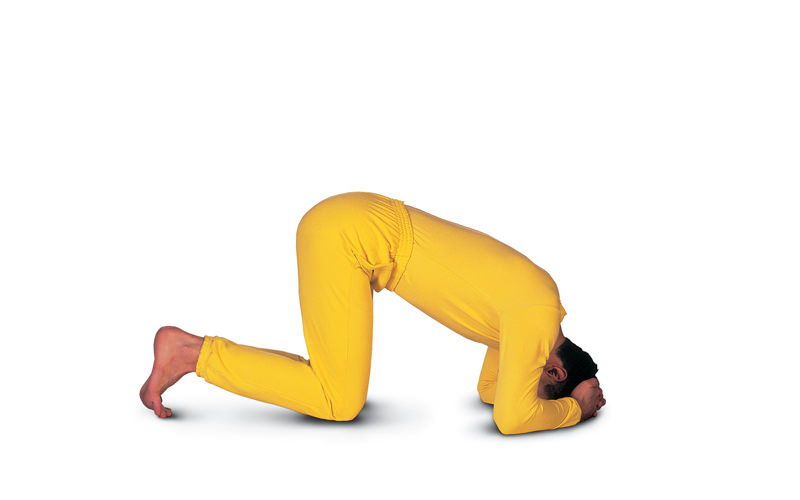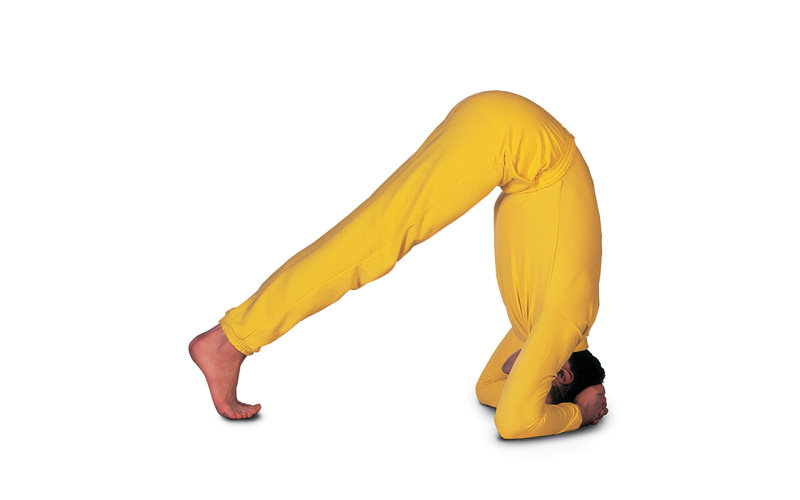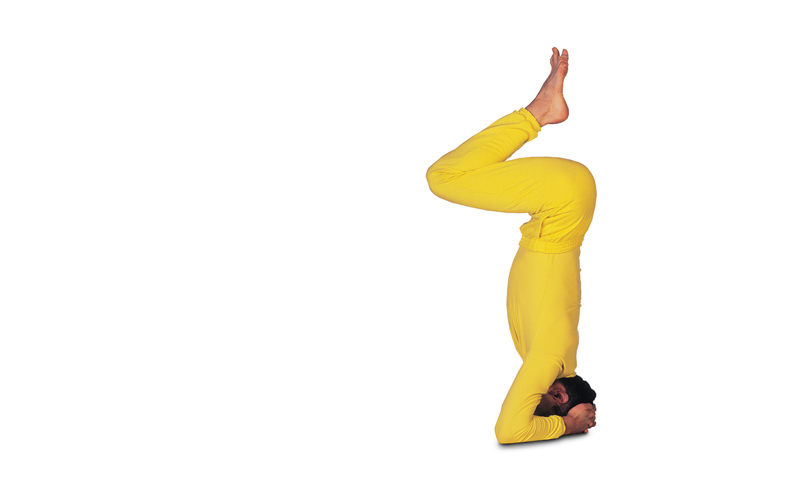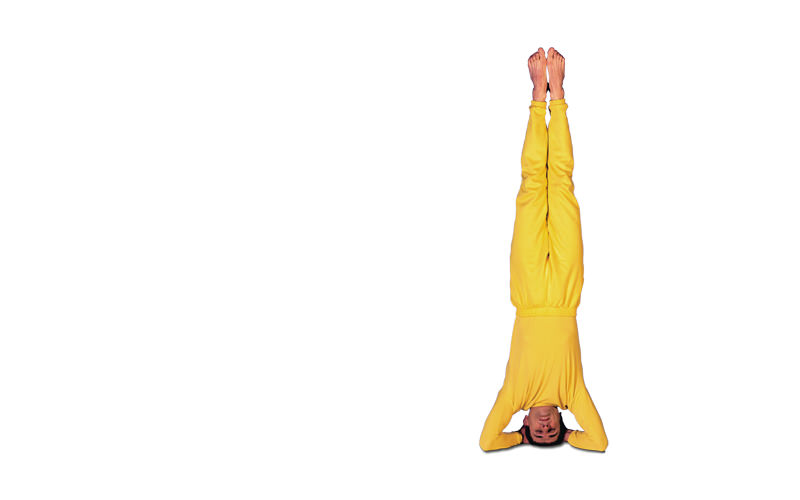Starting Position:
Vajrasana
Concentration:
on the whole body
Breath:
normal breathing
Duration:
1 minute to a maximum of 5 minutes (only after practicing for a longer period of time)
Practice:
Sit in Vajrasana. Hands rest on the thighs. >Breathing normally place the head on the floor in front of the knees. Clasp the fingers behind the head and support the back of the head with the clasped hands. The forearms rest on the floor and the elbows form an equilateral triangle with the head. >Tuck the toes under, lift the hips and straighten the legs. Concentrate on the balance of the body. Walk the feet in closer to the body so that the buttocks are high above the head. Transfer the weight of the body onto the forearms and raise the feet from the floor. Keeping the back straight bring the heels towards the buttocks. Finally, straighten the legs fully upright and allow the feet to remain relaxed. Balance the body weight between forearms, head and neck in a relaxed manner. >Hold the posture as long as possible, but not more than five minutes. >Slowly lower the legs by bending the knees and bringing the feet towards the buttocks and then the toes to the floor. >Relax forward for some time in Yoga Mudra and then return to Vajrasana.
Variation A:
Come into Shirshasana and hold the legs horizontal to the floor.
Variation B:
Come into Shirshasana and spread the legs wide apart.
Benefits:
Increases blood supply to the head, therefore is beneficial for brain function and all sensory organs in the head (eyes, ears etc.). Improves memory and the ability to concentrate. This Asana stimulates and regulates all the body's systems. Helps to counter problems related to menopause. Develops physical and mental contentment and aids spiritual progress.
Caution:
Avoid this Asana during menstruation and when there is high blood pressure, dizziness, cerebrovascular disorders, glaucoma or problems of the cervical spine.
Asana is included in the following categories:
Asanas and Exercises to Improve Blood Supply to the Head



